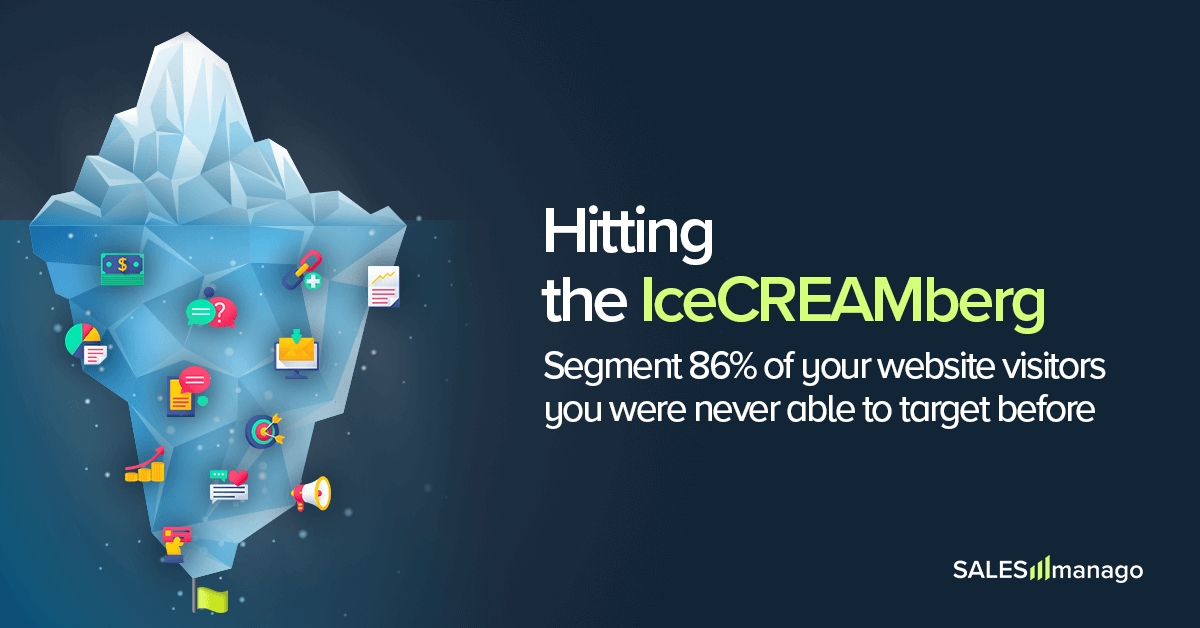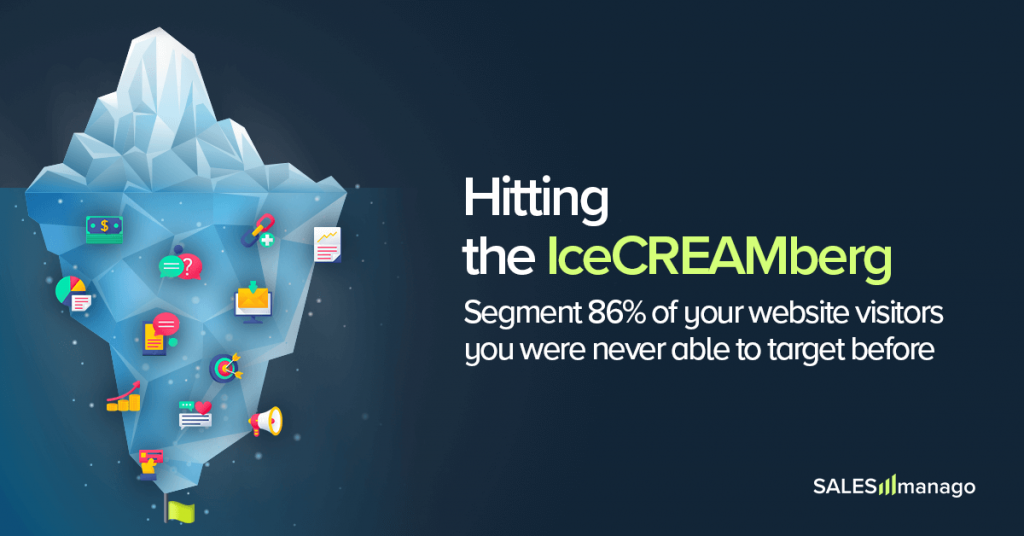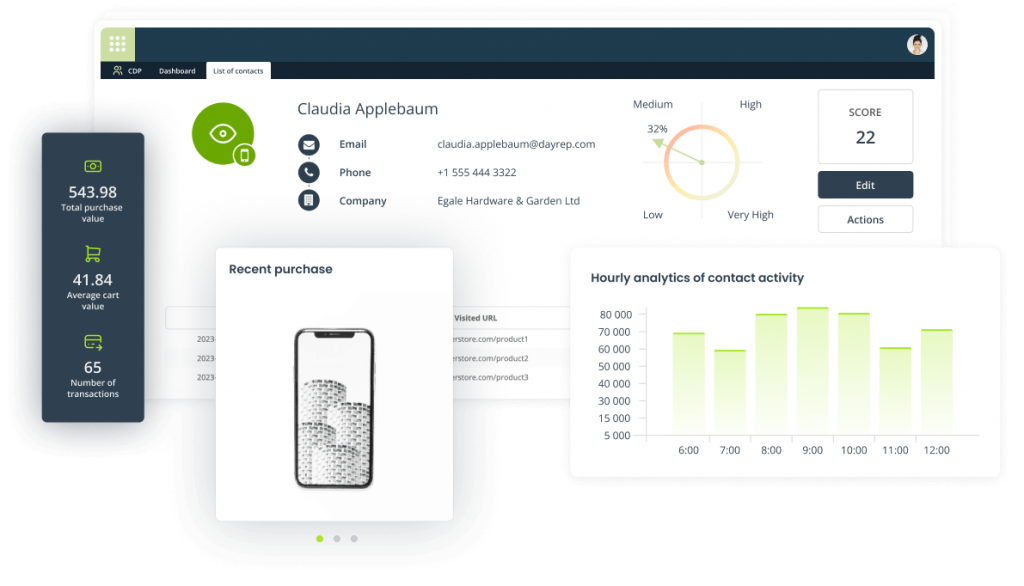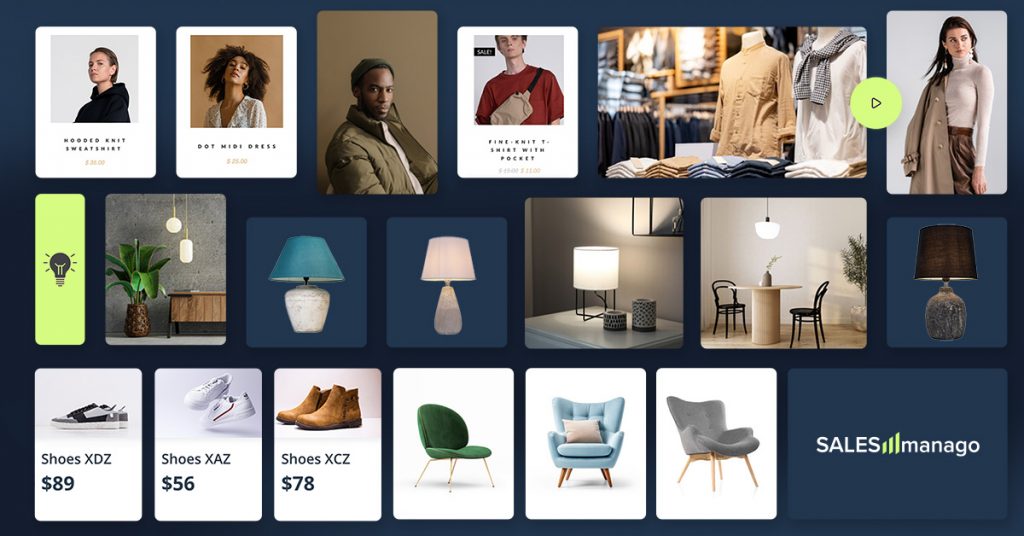You probably have heard of the widely repeated phrase which goes like this: “More and more B2C marketers are adopting B2B strategies”. A few years ago it was developed by the leading marketing automation research analysts and then promoted by all the major providers of marketing automation tools in the US. Today, after 5 years of delivering marketing automation platform to over 6000 Online Stores and B2C companies worldwide, I may clearly say: this approach is just totally wrong.
Greg Blazewicz – Founder & CEO of SALESmanago Marketing Automation.
When we first launched our platform SALESmanago Marketing Automation in 2012, we didn’t expect that today 80% out of our customers would be online stores and B2C companies. We were surprised because at those times most of US marketing automation players would address the needs of B2B companies and this kind of companies seemed to be most prepared to use this type of software.
| Greg Blazewicz – Founder & CEO of SALESmanago Marketing Automation – over 15 years of experience in digital marketing. His career started in marketing agencies in New York and London. For 6 years held position of Marketing Director at Comarch – one of the largest European IT solutions provider. In 2006 nominated a CEO of Interia, one of the largest horizontal internet portal in Europe listed on Warsaw Stock Exchange employing over 250 people and led the sale of the portal to one of the world’s largest media groups Bauer Media in 2008. Since then entrepreneur from the beginning involved in creating software for marketing teams, the result of which is SALESmanago Marketing Automation. In 2014 he was a finalist of EY Entrepreneur of the Year contest. |
Well 5 years ago, the online sales of online stores, especially in Europe when we started, were already booming. Traditional retailers faced huge problems connected with the customers migrating from brick-and-mortar stores to online stores, ROPO effect, lower and lower customer loyalty and many others. These problems were not existing in the area of the B2B companies.
The effect was that when we launched SALESmanago, the majority of our customers would be B2C companies, as the need to solve the problems they encountered was most significant. That really influenced how our platform was built and what are the features we offer. At the same time, seeing that it’s the B2C market and Online stores that are becoming the primary users of marketing automation software, I was very surprised to see that the traditional marketing platforms for B2B companies from the US would explain to the marketing world that “more and more B2C marketers are adopting B2B strategies” – sorry guys – it’s bullshit.
I understand that they faced the huge increase of B2C companies and Online stores entering marketing automation, but selling them the same software as for B2B and explaining with analysts that they should adopt B2B strategies is not good.
B2B purchase process is totally different than B2C purchase process
Let’s have a look at B2B process. What do we have there: Sales Funnel that works more or less like this:
Lead (MQL – Marketing Qualified Lead) > Lead Nurturing > Stage Interested (SQL – Sales Qualified Lead) > Webinar > Offer > Offer Accepted > Closing deal > Customer
And probably all of the marketing campaign process management features at probably all marketing automation platforms are designed to cover this kind of linear sales/ purchase process. Do you really believe that this is how the process looks like with customers at online stores and B2C companies?!
Of course, NOT.
That’s why having from the beginning 80% of B2C companies as our customers we would focus on a totally different approach to marketing automation process management and automation rules based on dynamic customer segmentation. Honestly speaking, we introduced traditional linear campaign process management workflow only a few months ago especially for a few B2B companies using our software. But the focus and our objective always remained the same: creation of complex, best on the market – all-in-one marketing automation tool for Online stores and B2C companies.
Engagement Marketing, Inbound marketing – it works, but maybe we can all do a bit better
I love the idea of leading players to develop their own concepts for overall marketing strategies and promote as their own ideas that then drive the sales of their software. Engagement marketing – is a great concept aiming at such formulation of a strategy to make customers involved in what you do, to engage them during the purchase process. Inbound Marketing – huge marketing concept, that was formulated by Hubspot even before they knew what their software would be doing.
Those ideas and many others are serving the general idea of changing the status of marketer and marketing team within the company, as a way to provide more value to organizations. But can really engagement or inbound traffic be a mean to actually structure marketing process and measure the effect of marketer’s work? In some cases they can increase: email conversion, anonymous traffic conversion, banner conversion, etc. Yes, these parameters at the end of the day lead to increase in sales. No brainer here. But we have some other ideas about it.
What is the sexiest thing marketer can bring to the company
All of my life, especially the time in SALESmanago Marketing Automation platform, I’ve spent to find the methods and solutions that help marketers deliver more value to their companies. Engagement and Inbound stuff is a way to make that sound very sexy. But the sexiest thing that marketer can think of is money they are managing and bringing to the company.
That’s why, as a result of 5 years of experience of providing marketing technology for Online stores and B2C companies, we would like to introduce our own approach to building marketing automation strategy. We call it Customer Value Marketing, and we hope that you marketers will find this approach interesting and worth spending some time on it. We have also prepared a complete set of special features at our SALESmanago platform that fully support this idea and enable implementation of the new marketing processes.
Customer Value Marketing – the real challenge is to increase the customer value over time
Customer Value Marketing is a marketing strategy designed for B2C marketers built around the concept of customer value and marketing automation. Customer Value Marketing aims at building the highest value of a customer over time.
Customer Value Marketing is redefining traditional outbound marketing by the deployment of advanced methods of dynamic customer segmentation based on RFM (Recency, Frequency, Monetary) analytics, supported by behavioral (Digital Body Language) analytics used to create real-time multichannel structure of marketing automation processes along the whole customer lifecycle, from lead generation to bringing customer to most valuable segment and fostering long-term relationships.
Customer Value Marketing uses traditional outbound channels like email, website, online advertising, telemarketing as well as social media and mobile channel to create non-linear processes (as opposed to the linear processes present in the B2B context) of personalized, real-time offer delivery to the right person at the right time.
Customer Value Marketing is marketing strategy standing in contradiction to inbound marketing, as designed for B2B marketers and primarily oriented on generating leads and serving to attract and educate customers through different stages of the purchase funnel and driving website traffic by means of creating interesting content.
The main marketing technique to achieve the results of Customer Value Marketing is RFM based Marketing Automation based on dynamic segmentation of customers depending on the transactional activity of customer over time supported by the behavioral data gathered about the single customer in marketing automation platform. This new, dynamic, RFM based 360 Degrees Customer View may be then used to create a totally new structure of marketing automation processes using email, dynamic website content, mobile, social media, advertising networks, POS and direct sales to migrate the customer to the highest value segments of customers.
RFM based marketing Automation at SALESmanago – look at the great features we got
RFM based Marketing Automation feature segments customersaccording to purchases and transactions made by them. Transaction Analysis and segmentation goes beyond the value of the purchase and takes into account two additional dimensions: the frequency and the time elapsed since the last purchase. Those automatically created segments can then be used for implementation of:
- one-off marketing campaigns, such as sending emails, text messages, or the implementation of targeted advertising campaigns
- creating a completely new, non-linear model of automation rules, which aim to automatically migrate customers from the less valuable to most valuable customer segments
Advanced segmentation of customers
RFM (Recency, Frequency, Monetary) is a module which enables to analyze purchasing behaviors, segment customers and automate marketing and sales processes based on transactional data. It analyzes every customer in terms of three basic information:
- Recency – shows when was the last time a customer made a purchase order in the following dimensions: long, medium, short
- Frequency – shows how regularly does this customer make a purchase in the following dimensions: regular, casual, often
- Monetary – (the purchase value) shows how much money does this customer spend over a given period in the following dimensions: spender, average, saver
Such customer segmentation allows you to project far more efficient marketing strategy, optimize your sales and marketing spendings, as well as think strategically about how to engage your customers.
RFM Analysis – available customers’ segments
The main goal is to emerge the most active customers. With this data combined with RFM analysis, you can predict your customer’s behavior, as well as the impact on them in advance.
Recency
RFM analytical dashboard presents information about clients recent activity in time segment, thereby dividing users who bought within a period of time that was either:
– short
– medium
– long
By analyzing this data, we can compare the number of recently purchased products to the number of purchased products in the past by customers. We can also notice the difference between the revenue and the number of transactions made, and estimate the exact time in which we achieved the highest profit.

Frequency
Analytical dashboard shows clients in terms of their frequency of buying new products in time segments, thereby dividing them into customers who buy:
– casually
– regularly
– often
The analysis of this data allows you to compare the number of transactions made by the particular contact groups and the number of clients in segments, and thus showing us the characters, preferences and trends in various contact groups, depending on the frequency of performed transactions.

Monetary
Analytical dashboard presents the number of clients in terms of how much money they spend on our products in time segments, thereby distinguishing them as a:
– saver
– average
– spender
This analysis enables us to determine the character of particular customer groups, compare the frequency and the number of transactions made by particular consumers’ segments, so you can create even better-personalized offer based on cross-selling and up-selling strategies.

Analytical dashboard RFM allows us to correlate two variables, which show purchase preferences and trends of customers.
These variables comparison results in detailed information about customers including:
– recency and frequency
– frequency and monetary value
– recency and monetary value

RFM based Marketing Automation – new approach to marketing automation for Online Stores and B2C companies
RFM based Marketing Automation feature automatically segments contacts in your database depending on their transactional activity, which can be enhanced by behavioral data and based on that you can run a complete range of marketing processes:
- one-off marketing actions to selected segment or group of segments
- fully automated marketing campaigns and processes run automatically depending on the customer migration between various segments
It allows you to personalize real-time communications in all marketing channels, including:
- Email Marketing and dynamic email messages
- Dynamic and personalized website content
- Social Media (via automatically created Facebook Custom Audiences)
- Advertising networks
- Mobile marketing (SMS messages, Mobile Applications)
- Telemarketing campaigns for particular customer segments
Automation of marketing processes allows for responding to both: desirable and negative contact behavior automatically, in real time. In case premium customers lose the interest to your offer, you can send them the personalized email in order to re-engage them.
In addition, it facilitates the sales process management by placing your contacts on particular sales funnel stage, thus supporting the identification of potential key customers.
New, dynamic, 360 Degree Customer View may be then used to create a totally new structure of marketing automation processes using email, SMS messages, dynamic website content, mobile, social media, advertising networks, and direct sales to bring the customer to the highest value segments of consumers.






 Follow
Follow


![[New Feature] Shine the light on your hidden visitors with Spotlight](https://blog.salesmanago.com/wp-content/uploads/2024/04/1-9.png)


![[New Feature] Unlock Deep Behavioral Personalization with Product Collections](https://blog.salesmanago.com/wp-content/uploads/2024/03/1-3.png)



![[New Feature] Shine the light on your hidden visitors with Spotlight](https://blog.salesmanago.com/wp-content/uploads/2024/04/1-9-1024x536.png)







